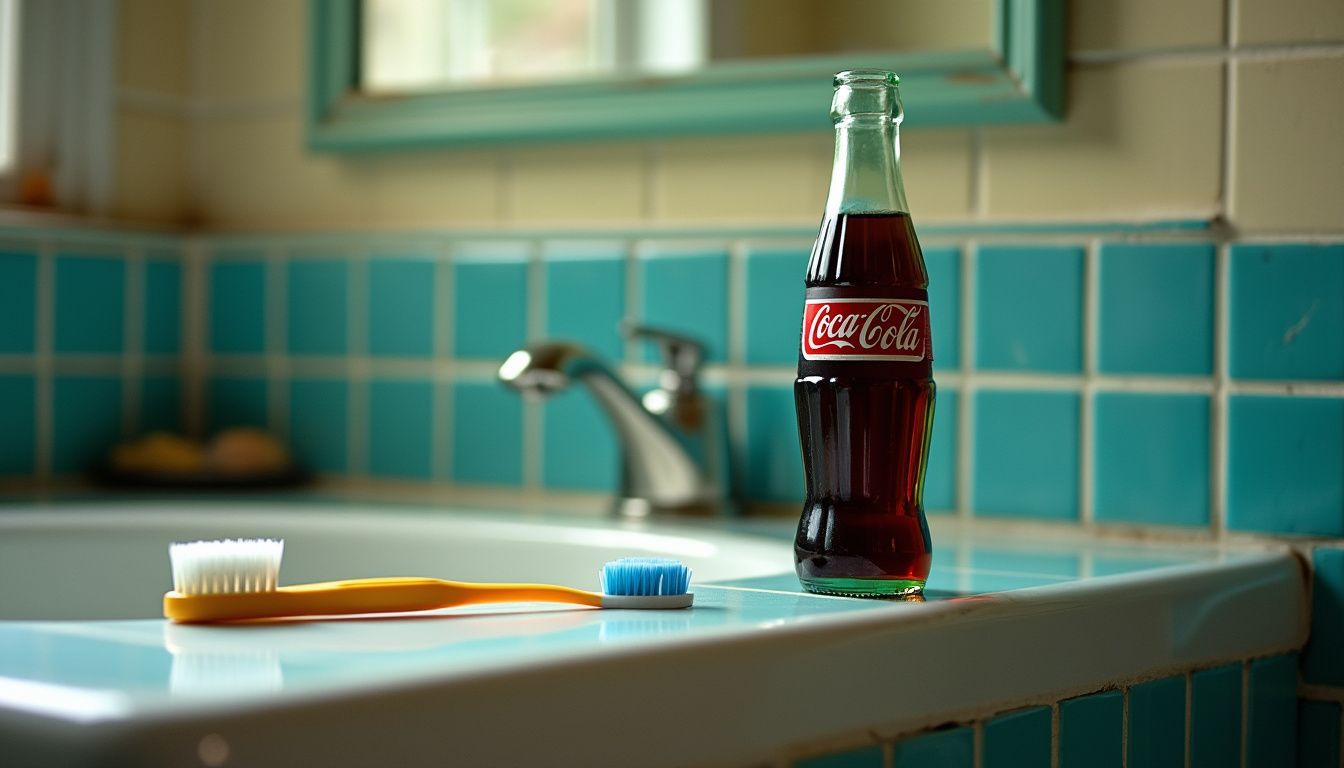Everyday items we use without a second thought have some of the most unexpected backgrounds. A modern toothbrush that started in China uses bristles from hogs. Alexander Fleming stumbled upon penicillin in 1928, marking the birth of antibiotics that would save millions of lives during World War II and beyond.
Simple burrs stuck to a dog’s fur led George de Mestral to invent Velcro in 1941, showing us innovation can come from anywhere. Alfred Nobel created dynamite in 1867, changing construction and mining forever by making it easier to break rocks and clear land.
John Stith Pemberton mixed up the first batch of Coca-Cola as a medicinal tonic in 1886, not knowing it would become one of the world’s best-known drinks. These inventions share humble beginnings but have significantly shaped our daily lives and industries over time.
Let’s explore these stories more deeply.
Unexpected Origins of Everyday Items
Many common items come from surprising beginnings. Each has a unique story that reveals how innovation works in unexpected ways.
Toothbrush
The toothbrush has a fascinating history. Ancient civilizations used sticks to clean their teeth. The modern toothbrush emerged in the 15th century in China. It featured bristles from hogs.
In 1780, a British man named William Addis created the first mass-produced toothbrush. This invention changed oral hygiene forever. Today, toothbrushes come in various styles and materials.
They help us maintain healthy smiles. The simple toothbrush has unexpected origins that many do not know about.
Penicillin
Penicillin changed medicine forever. In 1928, Alexander Fleming discovered it by accident in his lab. He found that a mold called Penicillium notatum killed bacteria. This surprising origin led to the development of the first antibiotic.
Hospitals quickly adopted penicillin to fight infections. Many lives were saved during World War II thanks to this unexpected invention. It became a common treatment for various ailments.
Today, penicillin is a cornerstone in modern medicine. Many people depend on it to treat bacterial infections. Its unusual origin story highlights how accidents can lead to vital breakthroughs in healthcare.
Velcro
Velcro has an interesting history. Swiss engineer George de Mestral invented it in 1941. He created this unique fastener after noticing how burrs stuck to his dog’s fur. The design features tiny hooks and loops that catch on fabric.
This simple yet effective mechanism revolutionized closures in everyday items.
Today, Velcro appears in shoes, clothing, and bags. Many military inventions also utilize Velcro for its ease of use. Its surprising origins show how an ordinary observation can lead to significant innovations.
Next, we’ll explore the unexpected origin of dynamite.
Dynamite
Alfred Nobel invented dynamite in 1867. He discovered it while researching safer ways to handle nitroglycerin. This invention changed construction and mining. Workers used it to break rocks and clear land.
Businesses saw a surge in productivity with dynamite. Its strength made it a valuable tool in many industries.
Later, people used dynamite in warfare. Soldiers found it useful for demolishing obstacles. This shift marked a startling turn in its history. Dynamite’s unexpected origins reveal how inventions can transform everyday life.
Matches also have an interesting story to tell.
Blood Thinner Warfarin
Dynamite’s surprising origins lead us to another interesting invention: blood thinner warfarin. This medication has a unique backstory. Farmers first discovered it in the 1920s. They noticed that livestock kept eating spoiled sweet clover.
The spoiled clover contained a substance that caused unusual bleeding in animals.
Doctors later used this knowledge to create warfarin for human medicine. It became popular because it effectively prevents blood clots. Warfarin has since saved countless lives, making it an essential part of treatments for heart disease and other conditions.
This unusual origin story highlights how some everyday items come from unexpected places.
Matches
Matches have a surprising origin story. In 1826, an English chemist named John Walker accidentally discovered a way to create fire. He mixed chemicals on a stick and struck it against a rough surface.
This simple act produced flames. Soon after, people began to use matches as a quick and easy way to light fires.
During the 19th century, matches gained popularity. Manufacturers produced them in large quantities. By the 1900s, safety matches arrived. These were much safer than their predecessors.
They required striking on a special surface to ignite. Today, matches remain a common household item. Their unexpected evolution highlights how accidental inventions can change our daily lives.
Coca-Cola
Coca-Cola originated in 1886. John Stith Pemberton, a pharmacist, created the drink in Atlanta, Georgia. He mixed a syrup of coca leaves and kola nuts. Pemberton aimed to develop a medicinal beverage.
He sold it at Jacobs’ Pharmacy for five cents a glass.
The drink quickly became popular. Customers enjoyed the refreshing taste. Pemberton’s partner, Frank M. Robinson, named it Coca-Cola. The name stood out and featured the unique flavor.
Today, Coca-Cola is one of the most recognized brands worldwide. Its surprising origins highlight how accidental inventions can become everyday commodities.

